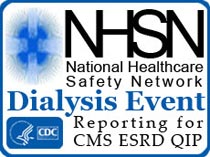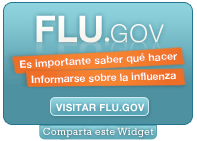Quality Improvement
MISSION STATEMENT: “Our goal is to form a dynamic partnership designed to foster an environment of continuous quality improvement and mentoring in ESRD Network 13 facilities. TOGETHER, we will be our best and do our best in the interest of quality patient care.” The information provided in this section is to help assist the dialysis and transplant providers to give the best possible care. All documents in this section are printer friendly for your convenience, so please feel free to copy the information as needed.
The information provided in this section is to help assist the dialysis and transplant providers to give the best possible care. All documents in this section are printer friendly for your convenience, so please feel free to copy the information as needed.
ESRD Network 13 is pleased to provide these tools for use or adaptation. If you adapt our material for your organization or personal use, please acknowledge ESRD Network 13 as the source. Please add a citation to your document or web page, include the URL, date accessed, and ESRD Network 13. ESRD Network 13 suggests the following citations.
|
Quality Improvement Resources
|
| The Facility Resource Materials provide updated materials set forth by the Network 13 Medical Review Board (MRB) and helpful information regarding the care of ESRD patients. The information is printer friendly so please feel free to copy materials as needed. |
| The Quality Improvement Tools provide a listing of the current Quality Improvement projects and associated tools from ESRD Network 13. |
| The Dialysis Facility Report (DFR) includes updated quality measures and data that could be useful in quality improvement and assurance activities. |
| The Clinical Tools provides listings of Web sites for clinical calculations. |
The Clinical Performance Measures (CPM) – Annually, the Centers for Medicare & Medicaid Services, with input from the Networks and the renal community, determines the areas to focus Network resources for national quality improvement activities. This activity is known as the “Clinical Performance Measures” (CPM). Each year, the following will be determined: The categories of care to assess, evaluate, and monitor for improvement;
|
FORUM MAC QI Tool Kits – The FORUM of ESRD Networks has developed a series of QI toolkits to address the areas of:
|
Quality Improvement Activities
For a complete list of all QI Tools and Resources, see section 4 of Facility Resource Materials.
Quality Improvement WorkPlan
T ask 1.a., Vascular Access [Fistula First (FF)] QIP (2010-2011) – Increasing AVF Utilization Rates for Prevalent Hemodialysis (HD) Patients with Placed AVF’s”
| Tools | |
| Vascular Access (Hemodialysis Patients) |
1. 2010 AVF Functionality Tool (Excel 2007 – Excel 97-2003)
Updated Version of the tool, this tool will allow you to add patients after the Initial Month ( Excel 2007 – Excel 97-2003) and Instruction (WebEx PowerPoint) |
Task 1.b., CPM Measures QIP – Vascular Access (Catheters) (2010-2011)– “Identification & Intervention to Expedite the Placement of Permanent Vascular Access in Catheter-Using Patients Where Permanent Vascular Access is Clinically Feasible”
| Tools | |
|
Vascular Access (Hemodialysis Patients)
|
1. 2010 Catheter Reduction Tool (Excel 2007 – Excel 97-2003) 2. Instruction 3. handout
|
Task 1.c., Network 13 QIP (2010-2011)- “Infection Control”
| Tools | |
|
Immunization (Hep B, Influenza, Pneumcoccal)
|
1. Reporting Tool (HD) 2. Reporting Tool (HD & PD) 3. Data Collection Tracking Tool (Coming soon) 4. Handout Professional
5. Handout Patient
6. Forum QI Medical Advisory Council (MAC) Tools |
Task 1.d., Facility-Specific QAPI (2010-2011)- “Incorporating Basic QI Steps into Existing Facility-Specific QI Projects”
| Quality Improvement | Tools |
|
Vascular Access (HD) AVF Functionality |
2010 AVF Functionality Tool (Excel 2007 – Excel 97-2003)
|
|
Vascular Access (HD) Catheter Reduction |
2010 Catheter Reduction Tool (Excel 2007 – Excel 97-2003) |
|
Anemia Management
|
Anemia Management Worksheet ( Tools ) |
|
Adequacy of Dialysis:
Hemodialysis & Peritoneal Dialysis |
1. Adequacy Audit Tools (Excel) 2. Instruction |
Updated 03/21/2011
Dialysis Facility Report (DFR)
Dialysis Providers: Don’t miss the Dialysis Facility Compare and ESRD Quality Incentive Program preview and comment period. Click here for more information.
Posted 06/29/2011
Clinical Tools
MDRD GFR Calculator (with SI Units)
by Stephen Z. Fadem, M.D., FACP, FASN
http://www.kidney.org/professionals/kdoqi/gfr_calculator.cfm
GFR CALCULATOR FOR CHILDREN AND ADOLESCENTS UP TO 18 YEARS OLD
Schwartz and Counahan-Barratt Methods
by Stephen Z. Fadem, M.D., FASN and Brian Rosenthal
http://www.kidney.org/professionals/kdoqi/gfr_calculatorPed.cfm
Clinical Practice Guidelines – Published/Uncer development KDOQI Guidelines
Translated Guideline in Russia and Arabic
http://www.kidney.org/professionals/KDOQI/guidelines.cfm
Clinical Performance Measures (CPM)
Annually, the Centers for Medicare & Medicaid Services, with input from the Networks and the renal community, determines the areas to focus Network resources for National quality improvement activities. Historically this activity was known as the “Core Indicator Project.” With the advent of NKF-DOQI and clinical practice guidelines, this activity is now known as the “Clinical Performance Measures” (CPM). Each year, the following will be determined: s The categories of care to assess, evaluate, and monitor for improvement;
- The targeted ESRD patient population to study;
- The clinical performance measures on which data will be collected to describe the targeted patient population and care practices.
During each year of the contract, categories of care with clinical performance measures will be selected for review. The following information is as of 2001:
| Category of Care | Clinical Performance Measures (Examples) |
| Adequacy of Dialysis: Hemodialysis & Peritoneal Dialysis |
Pre and Post BUN Levels Utilized Dialyzer (HD) Prescription (PD) Delivered time on hemodialysis Pre and Post Patient Weights Times per week dialyzed (HD) Delivered time on dialysis (HD) Delivered BFR @ 60 minutes (HD) URR and/or Kt/V Kt/V Methodology |
| Anemia | Hemoglobins EPO Utilization Iron Utilization & Iron Studies |
| Vascular Access (HD) | Type of access in use for study timeframe Reason for catheter, if applicable Catheter used for > 90 days Routine stenosis screening? Methods of access monitoring Type of access in use for first hemodialysis Date access placed Type of access in use after 90 days |
| Nutrition | Albumin Levels Lab method utilized for obtaining albumins |
Facility abstraction is done on selected patient records for the clinical performance measures for the specified time period . The patient sample is a random selection, via CMS, of patients who were on incenter hemodialysis or peritoneal dialysis during the last quarter of the year.
Each April, the Network forwards CPM data collection forms and instructions, patient sample, and fax response sheet to each facility selected to participate. Each facility abstracts data from patient records and submits forms to the Network office. Each fall, the Network QI staff performs a Data Validation Study (DVS) for the CPM activity. A random patient/facility sample is selected by CMS and then the Network requests patient records be submitted to the Network office for Network data abstraction.
CMS and the Network then analyze performance measures which should be monitored or investigated for opportunities to improve outcomes of care.
CMS Web site – Clinical Performance Measures (CPM) Project – Measures and Data Collection







